Hanwen Liu
Training-Free ANN-to-SNN Conversion for High-Performance Spiking Transformer
Aug 11, 2025Abstract:Leveraging the event-driven paradigm, Spiking Neural Networks (SNNs) offer a promising approach for constructing energy-efficient Transformer architectures. Compared to directly trained Spiking Transformers, ANN-to-SNN conversion methods bypass the high training costs. However, existing methods still suffer from notable limitations, failing to effectively handle nonlinear operations in Transformer architectures and requiring additional fine-tuning processes for pre-trained ANNs. To address these issues, we propose a high-performance and training-free ANN-to-SNN conversion framework tailored for Transformer architectures. Specifically, we introduce a Multi-basis Exponential Decay (MBE) neuron, which employs an exponential decay strategy and multi-basis encoding method to efficiently approximate various nonlinear operations. It removes the requirement for weight modifications in pre-trained ANNs. Extensive experiments across diverse tasks (CV, NLU, NLG) and mainstream Transformer architectures (ViT, RoBERTa, GPT-2) demonstrate that our method achieves near-lossless conversion accuracy with significantly lower latency. This provides a promising pathway for the efficient and scalable deployment of Spiking Transformers in real-world applications.
HyDRA: A Hybrid Dual-Mode Network for Closed- and Open-Set RFFI with Optimized VMD
Jul 16, 2025Abstract:Device recognition is vital for security in wireless communication systems, particularly for applications like access control. Radio Frequency Fingerprint Identification (RFFI) offers a non-cryptographic solution by exploiting hardware-induced signal distortions. This paper proposes HyDRA, a Hybrid Dual-mode RF Architecture that integrates an optimized Variational Mode Decomposition (VMD) with a novel architecture based on the fusion of Convolutional Neural Networks (CNNs), Transformers, and Mamba components, designed to support both closed-set and open-set classification tasks. The optimized VMD enhances preprocessing efficiency and classification accuracy by fixing center frequencies and using closed-form solutions. HyDRA employs the Transformer Dynamic Sequence Encoder (TDSE) for global dependency modeling and the Mamba Linear Flow Encoder (MLFE) for linear-complexity processing, adapting to varying conditions. Evaluation on public datasets demonstrates state-of-the-art (SOTA) accuracy in closed-set scenarios and robust performance in our proposed open-set classification method, effectively identifying unauthorized devices. Deployed on NVIDIA Jetson Xavier NX, HyDRA achieves millisecond-level inference speed with low power consumption, providing a practical solution for real-time wireless authentication in real-world environments.
SoftDedup: an Efficient Data Reweighting Method for Speeding Up Language Model Pre-training
Jul 09, 2024



Abstract:The effectiveness of large language models (LLMs) is often hindered by duplicated data in their extensive pre-training datasets. Current approaches primarily focus on detecting and removing duplicates, which risks the loss of valuable information and neglects the varying degrees of duplication. To address this, we propose a soft deduplication method that maintains dataset integrity while selectively reducing the sampling weight of data with high commonness. Central to our approach is the concept of "data commonness", a metric we introduce to quantify the degree of duplication by measuring the occurrence probabilities of samples using an n-gram model. Empirical analysis shows that this method significantly improves training efficiency, achieving comparable perplexity scores with at least a 26% reduction in required training steps. Additionally, it enhances average few-shot downstream accuracy by 1.77% when trained for an equivalent duration. Importantly, this approach consistently improves performance, even on rigorously deduplicated datasets, indicating its potential to complement existing methods and become a standard pre-training process for LLMs.
Mix-of-Granularity: Optimize the Chunking Granularity for Retrieval-Augmented Generation
Jun 01, 2024



Abstract:Integrating information from different reference data sources is a major challenge for Retrieval-Augmented Generation (RAG) systems because each knowledge source adopts a unique data structure and follows different conventions. Retrieving from multiple knowledge sources with one fixed strategy usually leads to under-exploitation of information. To mitigate this drawback, inspired by Mix-of-Expert, we introduce Mix-of-Granularity (MoG), a method that dynamically determines the optimal granularity of a knowledge database based on input queries using a router. The router is efficiently trained with a newly proposed loss function employing soft labels. We further extend MoG to Mix-of-Granularity-Graph (MoGG), where reference documents are pre-processed into graphs, enabling the retrieval of relevant information from distantly situated chunks. Extensive experiments demonstrate that both MoG and MoGG effectively predict optimal granularity levels, significantly enhancing the performance of the RAG system in downstream tasks. The code of both MoG and MoGG will be made public.
EEG2TEXT: Open Vocabulary EEG-to-Text Decoding with EEG Pre-Training and Multi-View Transformer
May 03, 2024



Abstract:Deciphering the intricacies of the human brain has captivated curiosity for centuries. Recent strides in Brain-Computer Interface (BCI) technology, particularly using motor imagery, have restored motor functions such as reaching, grasping, and walking in paralyzed individuals. However, unraveling natural language from brain signals remains a formidable challenge. Electroencephalography (EEG) is a non-invasive technique used to record electrical activity in the brain by placing electrodes on the scalp. Previous studies of EEG-to-text decoding have achieved high accuracy on small closed vocabularies, but still fall short of high accuracy when dealing with large open vocabularies. We propose a novel method, EEG2TEXT, to improve the accuracy of open vocabulary EEG-to-text decoding. Specifically, EEG2TEXT leverages EEG pre-training to enhance the learning of semantics from EEG signals and proposes a multi-view transformer to model the EEG signal processing by different spatial regions of the brain. Experiments show that EEG2TEXT has superior performance, outperforming the state-of-the-art baseline methods by a large margin of up to 5% in absolute BLEU and ROUGE scores. EEG2TEXT shows great potential for a high-performance open-vocabulary brain-to-text system to facilitate communication.
AI for Biomedicine in the Era of Large Language Models
Mar 23, 2024


Abstract:The capabilities of AI for biomedicine span a wide spectrum, from the atomic level, where it solves partial differential equations for quantum systems, to the molecular level, predicting chemical or protein structures, and further extending to societal predictions like infectious disease outbreaks. Recent advancements in large language models, exemplified by models like ChatGPT, have showcased significant prowess in natural language tasks, such as translating languages, constructing chatbots, and answering questions. When we consider biomedical data, we observe a resemblance to natural language in terms of sequences: biomedical literature and health records presented as text, biological sequences or sequencing data arranged in sequences, or sensor data like brain signals as time series. The question arises: Can we harness the potential of recent large language models to drive biomedical knowledge discoveries? In this survey, we will explore the application of large language models to three crucial categories of biomedical data: 1) textual data, 2) biological sequences, and 3) brain signals. Furthermore, we will delve into large language model challenges in biomedical research, including ensuring trustworthiness, achieving personalization, and adapting to multi-modal data representation
XAI-CLASS: Explanation-Enhanced Text Classification with Extremely Weak Supervision
Oct 31, 2023Abstract:Text classification aims to effectively categorize documents into pre-defined categories. Traditional methods for text classification often rely on large amounts of manually annotated training data, making the process time-consuming and labor-intensive. To address this issue, recent studies have focused on weakly-supervised and extremely weakly-supervised settings, which require minimal or no human annotation, respectively. In previous methods of weakly supervised text classification, pseudo-training data is generated by assigning pseudo-labels to documents based on their alignment (e.g., keyword matching) with specific classes. However, these methods ignore the importance of incorporating the explanations of the generated pseudo-labels, or saliency of individual words, as additional guidance during the text classification training process. To address this limitation, we propose XAI-CLASS, a novel explanation-enhanced extremely weakly-supervised text classification method that incorporates word saliency prediction as an auxiliary task. XAI-CLASS begins by employing a multi-round question-answering process to generate pseudo-training data that promotes the mutual enhancement of class labels and corresponding explanation word generation. This pseudo-training data is then used to train a multi-task framework that simultaneously learns both text classification and word saliency prediction. Extensive experiments on several weakly-supervised text classification datasets show that XAI-CLASS outperforms other weakly-supervised text classification methods significantly. Moreover, experiments demonstrate that XAI-CLASS enhances both model performance and explainability.
TableQAKit: A Comprehensive and Practical Toolkit for Table-based Question Answering
Oct 23, 2023



Abstract:Table-based question answering (TableQA) is an important task in natural language processing, which requires comprehending tables and employing various reasoning ways to answer the questions. This paper introduces TableQAKit, the first comprehensive toolkit designed specifically for TableQA. The toolkit designs a unified platform that includes plentiful TableQA datasets and integrates popular methods of this task as well as large language models (LLMs). Users can add their datasets and methods according to the friendly interface. Also, pleasantly surprised using the modules in this toolkit achieves new SOTA on some datasets. Finally, \tableqakit{} also provides an LLM-based TableQA Benchmark for evaluating the role of LLMs in TableQA. TableQAKit is open-source with an interactive interface that includes visual operations, and comprehensive data for ease of use.
Back-Projection Pipeline
Jan 25, 2021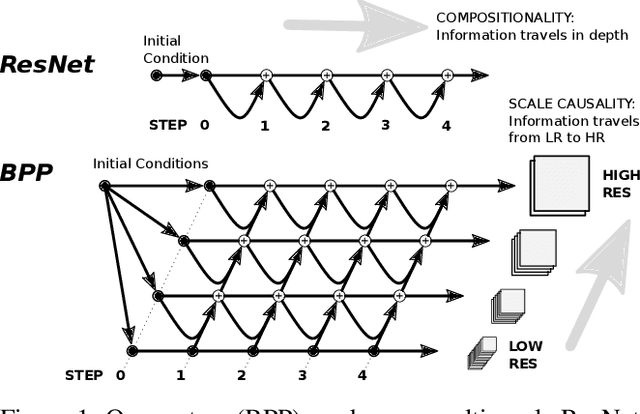
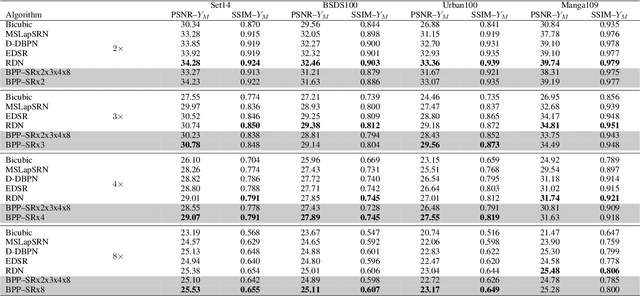
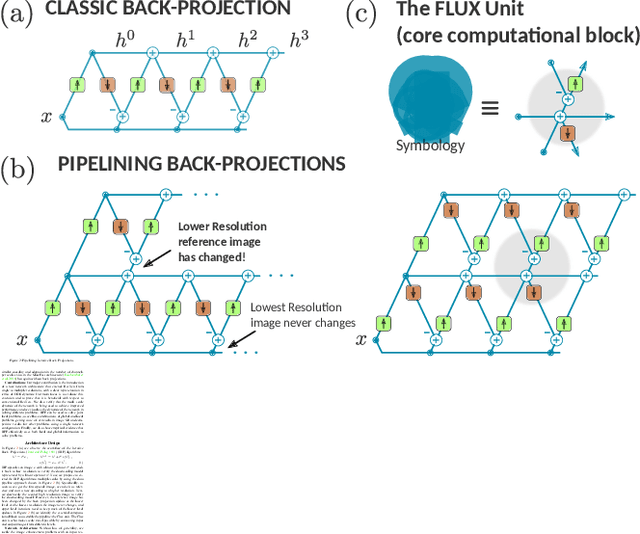
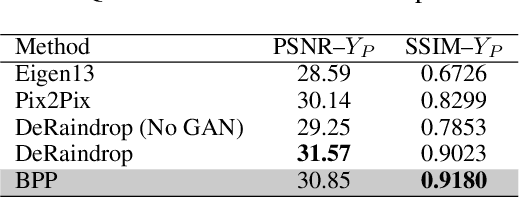
Abstract:We propose a simple extension of residual networks that works simultaneously in multiple resolutions. Our network design is inspired by the iterative back-projection algorithm but seeks the more difficult task of learning how to enhance images. Compared to similar approaches, we propose a novel solution to make back-projections run in multiple resolutions by using a data pipeline workflow. Features are updated at multiple scales in each layer of the network. The update dynamic through these layers includes interactions between different resolutions in a way that is causal in scale, and it is represented by a system of ODEs, as opposed to a single ODE in the case of ResNets. The system can be used as a generic multi-resolution approach to enhance images. We test it on several challenging tasks with special focus on super-resolution and raindrop removal. Our results are competitive with state-of-the-arts and show a strong ability of our system to learn both global and local image features.
Multi-Grid Back-Projection Networks
Jan 01, 2021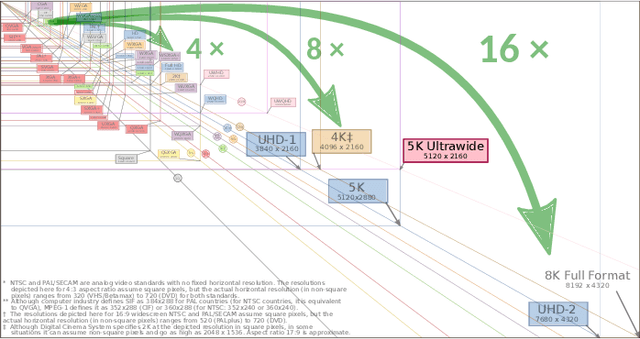
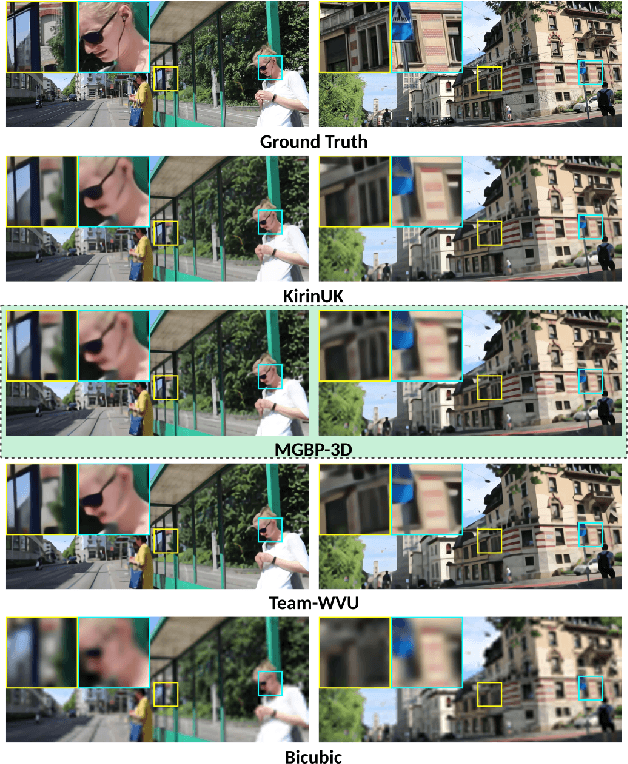
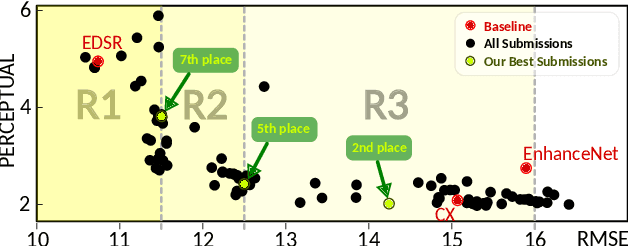
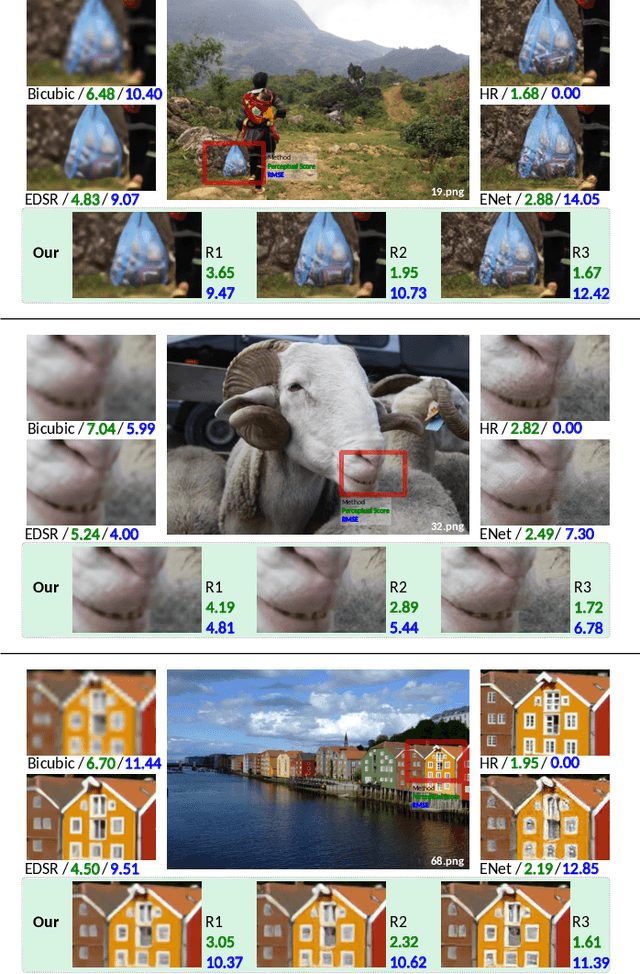
Abstract:Multi-Grid Back-Projection (MGBP) is a fully-convolutional network architecture that can learn to restore images and videos with upscaling artifacts. Using the same strategy of multi-grid partial differential equation (PDE) solvers this multiscale architecture scales computational complexity efficiently with increasing output resolutions. The basic processing block is inspired in the iterative back-projection (IBP) algorithm and constitutes a type of cross-scale residual block with feedback from low resolution references. The architecture performs in par with state-of-the-arts alternatives for regression targets that aim to recover an exact copy of a high resolution image or video from which only a downscale image is known. A perceptual quality target aims to create more realistic outputs by introducing artificial changes that can be different from a high resolution original content as long as they are consistent with the low resolution input. For this target we propose a strategy using noise inputs in different resolution scales to control the amount of artificial details generated in the output. The noise input controls the amount of innovation that the network uses to create artificial realistic details. The effectiveness of this strategy is shown in benchmarks and it is explained as a particular strategy to traverse the perception-distortion plane.
 Add to Chrome
Add to Chrome Add to Firefox
Add to Firefox Add to Edge
Add to Edge